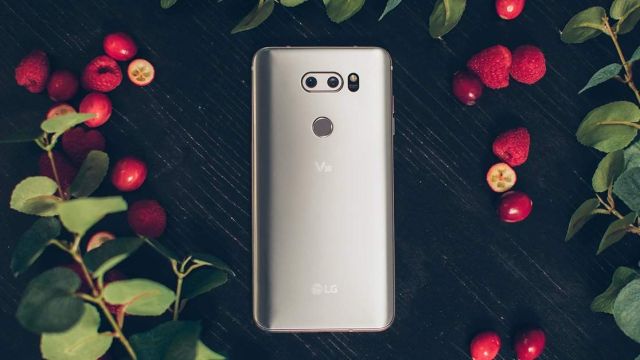
by Editor | May 25, 2021 | Markets, Technology
 By Prabhu Ram,
By Prabhu Ram,
The year gone by was an exciting year as many new flagship devices entered the market — Apple X, Samsung Galaxy S8 and Galaxy Note 8, Google Pixel 2 and 2XL, and the OnePlus 5 and 5T made some waves.
Apple iPhone X offered a radical re-design, catering to a hyper-competitive market in the throes of smartphone fatigue.
I call it smartphone fatigue because of near-uniformity among brands when it comes to shapes, sizes, designs and functions.
Smartphone brands are fighting the current market trends by differentiating themselves from others by offering customers bigger and better screens, refined camera specs and ramping up the average selling points (ASPs) for their flagships.
However, whatever be the price of a smartphone, there is not much difference in features between brands at various price points.
Even as the fight for better specifications hits a plateau, the expanding smartphone base in India offers avenues for new market entrants to test the waters.
India continues to be an exciting market for smartphones as well as one with the largest feature phone base. It provides smartphone vendors with clear targets: An attractive and lucrative replacement market, as well as an aspirational class that looks at migrating to smartphones from feature phones.
Later this year, key smartphone flagships will debut with some minor tweaks and iterations, rather than bold innovations.
The only exception to the rule could be Samsung. The electronics giant will be testing the waters with its truly foldable OLED smartphone in its “Galaxy” series with a limited run in South Korea.
It is one of the very few smartphone manufacturers hedging their bets on foldable flagships, with Apple and even Microsoft in the fray.
It will be late 2019 before these flagships start emerging in the global markets, depending on how the initial test run for Samsung goes this year.
This year will witness smartphone manufacturers embracing Artificial Intelligence (AI) significantly, with AI-powered smartphones heralding a new hype cycle.
In all likelihood, all the flagships in 2018 will come with an AI-chipset. The challenge for smartphone innovation will come from Voice AI. For instance, with increasing use of Voice AI, the smartphone will eventually become a mere enabling device, with the voice assistants controlling how we navigate the world around us.
Whether it be Siri or Google, Alexa or Bixby, the Voice AI is preparing us for a seamless experience between the real world and the technology layer. It is not surprising therefore that technology companies are training their Voice AI to embrace the lingual diversities of India.
An early sign of the future comes from Google. Twenty-eight per cent of the search queries on Google in India are by voice, with voice queries in Hindi growing at a staggering 400 per cent (year on year), according to Google India.
While smartphones enabled and democratised the access to information, technologies like Voice AI and Augmented Reality will communicate the information to us directly through voice or through display in front of our eyes. In an AI-driven world, the smartphones will lose their place as the only medium for information assimilation. We will, in all likelihood, spend lesser time looking at smartphone screens.
The smartphone, though a dominant medium, will mostly co-exist with other mediums, such as the wearable bands and the voice assistant-powered speakers in an AI-powered world. Smart glasses may make a return with new use cases by 2020.
In essence, smartphones will be around for now, but new tides of innovations will emerge elsewhere. Beginning with 2018, that will eventually lead to a new hands-free world of communication and knowledge assimilation.
(Prabhu Ram is Head, Industry Intelligence Group, at market research firm CMR, focused on advising industry participants on the dynamic telecommunications market in India and elsewhere through supply and demand side research.)
—IANS

by Editor | May 25, 2021 | Business, Markets, Medium Enterprise, SMEs, Technology
 By Sourabh Kulesh,
By Sourabh Kulesh,
New Delhi : Honor 9i (Rs 17,999) was the first smartphone with a four-camera system that arrived in India last year. To tap into the mid-price segment with the same USP, Huawei’s sub-brand Honor has launched Honor 9 Lite, starting at Rs 10,999.
The device is in a direct fight with Oppo A83 (Rs 13,990) and Samsung Galaxy On7 Prime (Rs 12,990) which were launched on the same day, January 17.
Let us see what works for the device.
Bearing a striking resemblance to the iPhone 8, Honor 9 Lite looks stunning with a plastic frame, sandwiched between 2.5D-curved glasses at the front and back.
The mirror-like glass at the back has more resistance against smudges when compared to other devices.
It comes with a 5.65-inch full-HD+, bezel-less display with an 18:9 aspect ratio in a 5.2-inch screen form factor, giving extra work space to users.
The screen is similar to the display concept by Samsung sans the curved edges that the South Korean giant has in its premium devices.
Honor 9 Lite sports a 13MP quad-camera set-up, Phase-Detection AutoFocus (PDAF) and advanced wide-aperture mode.
As far as the camera performance is concerned, the device offered a somewhat mixed performance. The beauty effects in selfies and portraits came out well at times.
The Beautify feature especially worked well. The face marks vanished and the skin had a soft tone to it while clicking selfies. It took a split second to process the image and the output was good too.
In the Portrait mode, available in both front and back cameras (13MP+2MP), the “bokeh” effect was excellent despite the device not being a premium smartphone.
With “bokeh”, we could also point out edges which were not meant to be blurred out.
The Portrait mode did work wonders for the rear cameras and we had better final images.
The device is powered by 16nm Kirin 659 Octa-core processor that runs it smoothly. The Kirin chip delivered seamless performance.
Even with a four-camera system, we did not find any lag while working with several apps simultaneously in the background.
The user interface has had a minor facelift with new EMUI 8.0 that runs Android 8.0 Oreo. The new interface is also claimed to have Artificial Intelligence (AI) capabilities which are not available in this device at the moment.
Since Honor 9 Lite has a lighter version of EMUI 8.0, there was no impact on the overall performance.
The smartphone has a 3,000mAh battery that gave us a day-long power with moderate use, including surfing and video data consumption.
What doesn’t work?
Although the camera output was good, the Beautify option did editing to an extent that the images appeared almost fake compared to the original.
The plastic chassis sandwiched between the glass is an unwelcome feature — drop your device and it’s gone for good.
Conclusion: For Rs 10,999 (32GB variant), the device with a four-lens system works perfectly. If you are a heavy user, you can opt for the 64GB model.
(Sourabh Kulesh can be contacted at sourabh.k@ians.in )
—IANS

by Editor | May 25, 2021 | Branding, Business, Large Enterprise, Markets, Online Marketing, Technology
 By Krishna SinhaChaudhury,
By Krishna SinhaChaudhury,
New Delhi : LG has been a dark horse in the flagship smartphone race, in a market that is dominated by the likes of Samsung, Apple and Google — not to forget Chinese smartphone players like OnePlus and Honor.
Just like Samsung, LG has been following the system of launching two flagships in a year: It launched its G6 early last year and the second one — the V30+ (4GB RAM and 128GB onboard storage) for Rs 44,990 — came in the fag end of 2017.
At first glance, the V30+ looks like a dependable device but is there more to it? Let’s find out.
Talking about the display, LG’s “FullVision” 6-inch QHD+ display with 18:9 aspect ratio and a resolution of 2880×1440 pixels takes up most of the space.
There are thin, understated bezels at the ends and the sides of the phone that lets the screen take centre-stage. However, the display with distinctly-rounded corners looks a lot like Google Pixel 2 XL.
In fact, the screen is the common factor between both the devices — that is the QHD+ P-OLED screen developed by LG.
The V30+, however, served up a brighter and slightly punchier screen than Google Pixel 2 XL. Having said that, there are options for tweaking the colour tones.
The rear of the device sees a liberal use of glass with the dual-camera system (16MP+13MP sensor) sitting beside the flash — in typical LG style. The fingerprint scanner has been embedded into the power button that lies below the camera module.
The device features a camera with a standard and a wide-angle lens. This especially makes the camera useful for capturing landscape photos without having to step far back.
The rear camera is pretty competent and pictures came out with clean colours and enough detail.
The camera bump is not big enough to make the phone wobbly when placed on flat surfaces.
The device’s light form factor was pretty impressive for a flagship phone. An added advantage is IP68 certification for water and dust resistance.
The onboard storage is just enough for storing memories. The internal memory can be expanded up to 2TB using a MicroSD card but that will take up the space of a second SIM as the device has a hybrid dual-SIM design.
A 3,300mAh battery fuels the phone which is supported by wireless charging as well as QuickCharge 3.0 technology.
We found the battery back-up very impressive as it lasted more than a day on rigorous use.
The single bottom-firing speaker on the V30+ was loud enough to not let us miss calls.
The responsiveness and performance was good thanks to the Qualcomm Snapdragon 835 chipset.
The device also did not get heated up when used for multi-tasking or continuous usage.
What does not work?
The notorious blue tint associated with P-OLED screens, which we also wrote about while reviewing the Google Pixel 2 XL, was also visible here — which is annoying.
The camera app in V30+ comes loaded with modes such as “snap shot”, “match shot”, “guide shot”, “grid shot” among others which we thought were not of much practical use.
The picture quality is not at par with the ones shot on other flagship devices such as Samsung Galaxy Note 8 or the Pixel 2 XL. A shortcut bar in the camera app lets you add photos to social media posts directly which is also not of much use.
The 5MP wide-angle front shooter is a let-down, especially for selfie addicts.
Conclusion: It is good to see LG take a big leap when it comes to the design language and overall performance. The phone has a few caveats like the screen tint issue and a slightly underwhelming camera. But given the price point, the V30+ makes for a great overall package.
(Krishna SinhaChaudhury can be contacted at krishna.s@ians.in)
—IANS

by Editor | May 25, 2021 | Branding, Business, Large Enterprise, Markets, Sales, Technology

Honor 7X smartphone
New Delhi : The continuous great response for Honor 7X smartphone forced the company to opt for the open-sale model for the device so that users who could not get their hands on it after three flash sales can own the phone, an executive from Huawei has said.
“With the launch of the Honor 7X, we have created a milestone for the competition in the budget category,” P Sanjeev, Vice President, Sales, Huawei India-Consumer Business Group, told IANS.
Earlier this week, Huawei’s sub-brand Honor announced that global sales of its X series of smartphones including the recently-launched Honor 7X hit the 40 million mark and said the device will be available with offers in an open-sale model till January 5.
“X-series including Honor 4X, Honor5X, Honor 6X and Honor 7X have achieved over 40 million unit sales in the global market with the Honor 7X being recognised as the best-seller during the Christmas week sales on Amazon.in,” the company said in a statement.
Huawei launch Honor 6X in the begining of this year and created a new benchmark for the sub-15K phone category with an industry-first dual-camera technology.
“Honor 7X, like its predecessor, provides users access to premium features at an affordable price, be it the beautiful FHD+ full-view screen, or the premium sturdy yet sleek design,” Sanjeev added.
Earlier this month, Honor 7X was launched for Rs 12,999 for the 32GB storage variant and Rs 15,999 for the 64GB variant.
The device houses a bezel-less screen and dual-lens (16MP + 2MP) rear camera with large aperture and fast focusing.
With the “Phase Detection Auto Focus” (PDAF) technology and the latest algorithms, the device enables focusing in 0.18 seconds.
The Honor 7X is powered by an Octal-core Kirin 659 processor at 2.36GHz and is equipped with 4GB RAM and its custom EMUI5.1 OS.
—IANS

by Editor | May 25, 2021 | Branding, Business, Emerging Businesses, Marketing Basics, Markets, Medium Enterprise, SMEs, Technology

Vivo V7
By Sourabh Kulesh,
New Delhi : When it comes to the selfie-focused smartphones market in India, Chinese smartphone players Vivo and Oppo clearly rule the mid-price segment.
Expanding its selfie-focused series, Vivo has announced two devices — V7 and V7+ — with the latter being made available in November.
Launched now, the Rs 18,990 V7 is the scaled-down version of V7+ — the Rs 21,990 device that lured the selfie-loving generation in India with a 24MP front camera (f/2.0 aperture) and bezel-less display.
V7 has the same camera as V7+ but has a bit less battery capacity, on-board memory and display size.
Vivo V7 directly rivals the Rs 19,990 Oppo F5 which has a 20MP selfie shooter.
Let us see if Vivo V7 can become a mid-segment selfie winner.
Design-wise, the trimmed antenna lines running on the upper and lower edges at the back are a differentiating factor, giving a premium look to the device.
Encased in metal-finished plastic body on the back and 2.5D glass on the front, the device is light and fits well in the hand.
The key highlight of V7+ was its edge-to-edge 5.99-inch IPS “Full View” display that is similar to Samsung’s “Infinity Display” and LG’s “FullVision Display”.
The V7 display has similar 18:9 aspect ratio as the V7+. It has very thin bezels on the side and enough space on the top for the 24MP front camera and sensors.
The 24MP front shooter has a selfie portrait mode and supports HDR.
The “live photo” feature creates a moving image, instead of capturing a moment in time with a still photo.
Users can use voice command or hand gesture to trigger the camera. Selfies had nice details under good lighting conditions. In low-light situations, the fill flash helped click a good image.
At the back, the device has a 16MP sensor with f/2.0 aperture. The processing is quick thanks to a well-balanced hardware.
Vivo V7 is fitted with a Qualcomm Snapdragon 450 chipset with 4GB RAM. The on-board memory, however, has been reduced to 32GB.
It has 3,000mAh battery that was enough for a day’s run. Vivo V7 has Funtouch OS 3.2 on Android 7.1.2 Nougat with bloatware. The device has iPhone influence on the user interface.
The navigation keys can be altered depending on preference and can be hidden — just like we can do in Samsung’s Galaxy Note 8.
The V7 also has a face-recognition feature, something that Apple is banking upon in its “super-premium” iPhone X to unlock the device.
For a regular user, Vivo V7 is a very good performer and can handle tasks without puting much burden on the hardware.
We didn’t notice any issues related to the device getting heated up despite prolonged gaming, and it worked lag-free with multiple apps running in the background.
A larger display means we had more space for content consumption. Audio output through earphones was good.
What doesn’t work?
The quality of the photos depend on the lighting conditions. Well-lit areas gave good output, while photos taken under bad light from the rear camera struggled a bit with quality.
The competitors are offering Full-HD display in similar price bracket while V7 has HD screen.
The speakers too were not loud enough to do justice to the content being played.
Conclusion: Vivo has been successful with its devices solely on the camera quality and the amount of details they put in to make smartphones with balanced output. For a price tag of Rs 18,990, the device is a good choice for selfie-lovers.
(Sourabh Kulesh can be contacted at sourabh.k@ians.in)
—IANS





